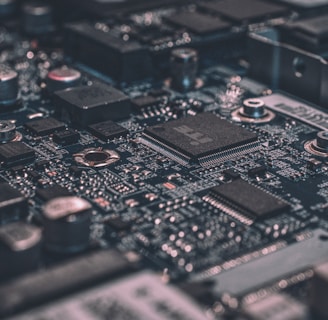Antitrust Regulations for Technology Companies in the United States Introduction
UNITED STATES
2/12/20253 min oku


Antitrust regulations are legal frameworks aimed at preserving competition in markets and preventing monopolistic structures. These regulations seek to ensure fair pricing for consumers and promote innovation. The United States, as one of the birthplaces of antitrust law, has significantly shaped developments in this field. Landmark laws such as the Sherman Antitrust Act (1890) and the Clayton Act (1914) provided the first comprehensive solutions to market manipulation.
The growth of technology companies, the unique structure of this sector, and its control over consumer data have made regulators focus on these companies. Companies like Google, Amazon, Meta (formerly Facebook), and Apple dominate vast market shares and serve as central players in the platform economy. Their merger strategies, data collection practices, and anti-competitive behaviors have triggered a global debate about the need to revise antitrust regulations.
Foundations of Antitrust Law in the U.S.
Legal Framework
U.S. antitrust law is built on three main statutes:
The Sherman Antitrust Act (1890): Prohibits agreements that restrict competition and monopolistic practices.
The Clayton Act (1914): Regulates mergers and acquisitions to prevent unfair competition.
The Federal Trade Commission Act (1914): Grants the Federal Trade Commission (FTC) authority to protect competition.
Roles of Federal Agencies
Two primary institutions enforce antitrust regulations in the United States:
The Department of Justice (DOJ): Enforces criminal and civil penalties for violations of the Sherman Act.
The Federal Trade Commission (FTC): Focuses on unfair competition and consumer protection issues.
Judicial Precedents and Doctrines
U.S. antitrust law has evolved through court rulings. For example, United States v. Microsoft Corp. (2001) is a landmark case that addressed monopolistic practices in the technology sector. In this case, Microsoft’s monopolistic behavior in the browser market was scrutinized, highlighting the need for technology companies to comply with competition laws.
Key Issues with Technology Companies
Market Dominance
Tech giants such as Amazon, Google, Meta, and Apple face criticism for their dominance in certain sectors. For example, Amazon's significant share in the e-commerce market has led to allegations of price manipulation and supply chain control to push competitors out of the market.
Monopolistic Practices and Data Usage
Google, with its 90% share of the search engine market, is accused of monopolistic practices. The company has been criticized for its handling of user data and demoting rival services in search rankings. Similarly, Meta's control of platforms like Facebook and Instagram is seen as consolidating power within the social media market.
Mergers and Acquisitions
Large tech companies are often accused of stifling competition by acquiring smaller rivals. For example, Facebook’s acquisitions of Instagram (2012) and WhatsApp (2014) have drawn criticism for contributing to monopolization in the platform economy. The FTC has become increasingly active in scrutinizing such mergers.
Recent Antitrust Reform Efforts
Proposed New Regulations
Congress has introduced various bills to tighten antitrust regulations for tech companies. The American Innovation and Choice Online Act is a key legislative proposal aiming to prevent tech giants from prioritizing their own products and services.
Notable Cases
United States v. Google (2020): The DOJ accused Google of abusing its dominance in search and advertising markets.
FTC v. Facebook (2020): The FTC sought to force Facebook to divest Instagram and WhatsApp due to monopolistic practices.
Federal and State-Level Approaches
In addition to federal regulations, there has been a rise in state-level antitrust cases. For instance, states like Texas and California have independently pursued legal action against tech companies.
Global Perspective and Comparison
U.S. antitrust policies are often compared with the regulatory approaches of the European Union. The EU is known for imposing more aggressive fines on tech companies. For example, the EU fined Google €4.34 billion in 2018.
China, on the other hand, adopts a stricter approach to regulating its domestic tech giants like Alibaba and Tencent. This contrasts with the more market-friendly approach of the U.S. However, there is growing pressure on U.S. regulators to adopt stricter policies similar to those of the EU.
Criticisms and Future Expectations
Some critics argue that antitrust regulations targeting tech companies may hinder innovation. Particularly, the acquisition of smaller firms by larger players is seen by some as a mechanism for fostering innovation rather than stifling it. The rapid evolution of the digital economy has exposed gaps in existing regulations. For example, there is still no comprehensive legal framework addressing emerging technologies such as artificial intelligence and the metaverse. Future antitrust regulations are expected to focus on areas like artificial intelligence and data collection practices. These areas involve not only consumer protection but also ethical and data privacy concerns.
Conclusion
Antitrust regulations in the United States play a critical role in preserving competition in the technology sector. Foundational laws such as the Sherman and Clayton Acts provide essential tools to combat market manipulation. However, the rapid changes in the digital economy highlight the need to modernize these laws.
The U.S.'s leadership in this field is also pivotal for international competition. In the future, the introduction of new regulations focusing on artificial intelligence, the metaverse, and other innovative technologies will ensure that the sector evolves in a way that benefits both consumers and innovation.
